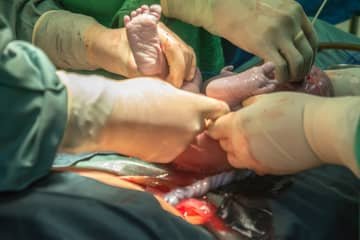
Why does not the cervix dilate during labor?
How does labor begin? Each woman would describe her experience differently. Regardless of whether it is a first-time mother or a mother of multiples, every pregnancy and birth has its own specifics. In connection with childbirth, the term opening is inflected. In essence, this is the process by which childbirth begins. The length, course and method of childbirth are affected by a number of factors. However, in general, physiological natural childbirth is divided into several phases:
- birth - opening period
- birth-expulsion period (fetus delivery)
- delivery period - delivery of the placenta
From the point of view of opening, the first period of childbirth is the most important, which is precisely the phase during which a woman opens. More specifically, labor begins with contractions, the outflow of the mucus plug or also the outflow of amniotic fluid. However, this ideal scenario is not the rule, and often these symptoms appear in a different order, and there can be a considerable time gap between them. The first stage of labor itself can be preceded by a preparatory phase during which false contractions begin. They ensure that the birth canal is prepared for childbirth.
Labor contractions cause the gate to open and the cervix to shorten. Under the pressure of the fetus and the uterus, which has strong muscle contractions during contractions, what happens is that the cervix first shortens and finally opens. In the case of a first-time mother, shortening takes place first and then opening, in women of multiple births these processes usually take place simultaneously. The cervix should ideally open at least 10 cm during the first period of labor, which ensures that the fetus should safely leave the woman's body in a natural way after traveling through the birth canal. The opening process is very individual for each woman. Some women open already a week or two before the planned birth and during labor contractions they can already be 4 to 5 cm open.
The opening phase can take a varying amount of time. In some women, the opening occurs several weeks before childbirth. Why does a woman not open during childbirth and what to do? Many mothers have certainly heard that despite the fact that the woman gave birth on time or even after it, the cervix did not open. There can be more reasons. However, the bottom line is that if the cervix does not open, the birth canal is not ready for birth, even though the fetus may be mature.
The birth canal is divided into hard (pelvis) and soft (vulva and vagina). During pregnancy, the birth canal changes due to the action of hormones. However, if the birth canal does not change enough, it means that the birth canal is rigid. In that case, they do not change as they should during contraction activity. The birth gate does not open and the chance of a natural birth decreases. This fact cannot be detected before labor contractions begin. In part, changes in the birth canal can be indicated by palpation, in which a cervical score is determined, which includes the overall condition of the birth canal. The reason for the rigidity of the birth canal can also be a genetic predisposition. The behavior of the birth canal can be affected by inflammation, previous surgical procedures in the small pelvis or abortion.
If labor does not start naturally on or after the due date, the birth is approached by artificially inducing labor. To speed up the opening, various methods of pre-induction or induction are used to start contraction activity (pre-induction) or induce labor (induction) - amnitomy, Hamilton's palpation, hydrophilic suppositories, balloon Foley catheter or administration of synthetic oxytocin. In the event that the doctor considers that induction of labor is not effective, it is necessary to proceed with delivery by caesarean section.
You can also support the opening phase with a warm bath or shower, walking up the stairs (with an escort), massaging the breasts, nipples or abdomen. Sexual intercourse or exercising on a fitness ball can also speed up childbirth.
Pridať komentár








